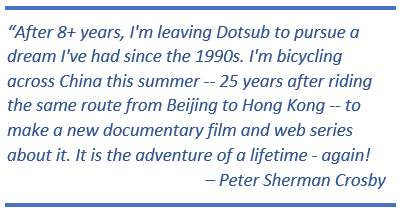How to Make Hybrid Meetings Inclusive
How to Make Hybrid Meetings Inclusive
Building Inclusive Hybrid Meetings
The adoption of hybrid workplaces has forced leaders to “rethink” everyday business activities. Before the pandemic, meetings were planned and structured well in advance. Microsoft found that weekly meeting time for Teams users has more than doubled since February 2020, leaving organizers less time to prepare. Hybrid meetings – meetings that contain a mix of in-person and remote attendees – have become critical to businesses needing to connect dispersed teams. Many face a challenge to make hybrid meetings inclusive for every attendee regardless of whether they are in the office, working from home or joining from a remote office. This article offers several ideas to help design inclusive hybrid meetings.
Create and Communicate Structure
Whether you are running a company-wide all-hands or a small team check-in, remote attendees can be at a disadvantage compared to those in the room with you. An excellent way to lessen the disparities and build inclusive meetings is to use the remote experience to inform how you prepare for and facilitate meetings.
“Creating equitable, inclusive experiences starts with designing for people not in the room.” – Satya Nadella, Microsoft CEO | The Hybrid Work Paradox
Create space for engagement. Before the event, reviewing each activity from the perspective of the remote participants will help encourage engagement. If presenting content like a video or slide deck, ensure the camera has an unobstructed view of the presenter and the presentation. Supply remote attendees with copies of any presentation materials or handouts ahead of the meeting. During discussion or Q&A sessions, ask for remote participants’ input first to ensure their voices are heard and consider appointing an in-person ally for remote attendees who can physically participate during interactive meeting activities. Not all activities will be remote-friendly but understanding the meeting from a remote perspective goes a long way towards building equity.
Provide an agenda with objectives in advance. Empower your team to participate by preparing them ahead of time with topics to be covered, the motivation behind the content, and presentation method. Creating a clear agenda will help limit in-person chatter, which can be distracting for remote viewers. For each topic on the agenda, define its objective. Is it to share information, solicit feedback, brainstorm, or work together to reach a consensus?? Including an objective and how each group will achieve that goal will increase engagement.
Put the Right Technology in Place
The technology you use plays a significant role in keeping all parties engaged and connected. Unlike in-person or virtual meetings, hybrid meetings require physical spaces, hardware and software to create virtual spaces, and infrastructure to connect the two.
Develop a technology plan for the whole team. Communicate technology requirements for both remote and in-person attendees and coordinate with IT to ensure everyone has the tools they need to participate. Hybrid meetings also require rooms outfitted with video and audio capabilities so that remote attendees can see and hear what is happening. Ensure the meeting room is properly equipped to handle your meeting structure and that the system is turned on and tested beforehand. With multiple locations and devices connecting simultaneously, there is a higher chance something could go wrong. Creating backup plans in case the room’s wifi goes down or remote viewers or presenters lose their connection will mitigate the damage of technical difficulties.
Prepare your network for the demands of hybrid meetings. As employees return to the office and hybrid meetings become commonplace, the influx of live video can tax existing networks and negatively impact their performance. In larger meetings with a mix of in-person and remote attendees accessing the live stream, ill-prepared networks can result in buffering or event failures. After experiencing multiple delivery failures to employees in critical locations, HSBC turned to Kollective for a solution that would remedy the problem. “Efficient video delivery to staff located on the fringes of the network was key to the requirement of the solution. Kollective was able to meet this requirement bringing communications to areas where it had not been possible before.” Adding an enterprise content delivery network (ECDN) to your technology stack will optimize your network, allowing you to deliver flawless live video to every employee regardless of their location, device, or bandwidth limitations.
Complete Coverage
With the rising demands of the hybrid workplace, other solutions have struggled to adapt and deliver in complex network environments. Kollective developed Complete Coverage to provide businesses with greater flexibility and the confidence that their network will always work. Kollective’s Edge Accelerator is the only ECDN Platform with delivery methods that handle the most diverse network needs to ensure that no employee is left behind.
Begin scaling live video today. Kollective’s Browser-Based Peering delivery solution solves most hybrid meeting challenges by reducing the bandwidth needed to deliver high-quality live video at scale. Browser-Based Peering is a cloud-based, WebRTC technology that can be deployed in minutes without installing software, purchasing hardware, or investing in additional infrastructure.
Reliable delivery in any situation. Combining Brower-Based Peering with Kollective’s Agent-Based Peering or EdgeCache delivery solutions meets the needs of networks with more specific demands like zero-trust or delivery to China or remote locations. Our multiple solutions can communicate using intelligent logic to utilize the most efficient delivery method with every request.
Building inclusive hybrid meetings requires new considerations due to their increased complexity. By preparing your team, leveraging technology, and enhancing your network you can make every employee feel included regardless of location.
The post How to Make Hybrid Meetings Inclusive appeared first on Kollective Technology .







